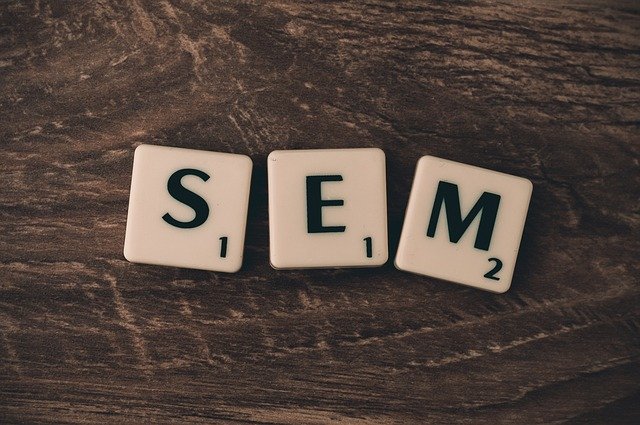SEO vs PPC: Is Organic SEO or Pay Per Click Better for my Business?

When you are planning marketing campaigns for your ecommerce website, there are a number of variables to consider, albeit given that every business is different, whichever you prioritise at different times, depending on changing business objectives, both have their value, regardless of business type.
It’s simply a question of keeping your marketing strategy under regular and consistent review to find what is working.
That being said, let’s dive into the essentials to learn what might work best for your online business and remember that what works today may have to evolve as the search engines tweak their algorithms.
SEO Versus PPC
SEO includes two elements, organic and PPC, (sponsored ad’s). Both are important for boosting your visibility and search engine ranking. The skill is in applying each at the appropriate time.
In general, as a rule of thumb, to gain immediate presence and visibility, pay per click (PPC) allows those with a good budget to get fast results, perhaps when launching a new product line, or boosting sales of your higher value goods or services.
Organic SEO is a longer term strategy, requiring consistency of efforts in creating high value content to your audiences. Every asset you create is money in the bank that accumulates in terms of ranking.
Some marketing channels achieve greater results than others, depending upon what products or services your business is about.
Google regularly updates its algorithms, so, organic ranking involves a commitment to learning emerging priorities of this search engine.
While this ever-changing SEO landscape is frustrating, it helps stop those with deep pockets gaming the system, leaving room for the smaller online business to compete.
Organic Ranking
The options for marketing focus are seemingly endless. For instance, here are just a few organic marketing channels to conjure with:
- Video uploaded to YouTube, Snapchat, Twitter, etc.
- Blogs
- White papers
- Guest posts to high authority niche sites
- Articles on LinkedIn
- Social media links from e.g. Facebook, Pinterest
- Forum contributions, such as Quora
- Your preferred media
The point whichever ‘channel’ you use for promotion is to establish:
- brand authority or industry leadership
- competitiveness in cost
- quality versus competitors
- any of the above and more
When creating content, it has to be significant to your audience and relevant. This way, the search engine maintains its value to searchers online. It’s important, therefore to avoid irrelevant links to other content.
Spamming will consign the website owner to a digital black hole. While there is an element of speaking to search engine bots, first and foremost write content for humans!
Another important aspect of what Google values is adaptability of online content to smart phones – bearing in mind this behemoth sells their own phone! If your content requires excessive page manipulation on a phone, chances are customers will get frustrated and click away.
Whatever content you upload, stay abreast of your audience’s responses by analysing your metrics. Without putting time into reviewing success, your efforts can be wasted. Seeing what is popular and where your audience likes to find your website content from helps you to prioritise your future marketing strategies and better manage your SEO return on investment
PPC
Sponsored Ad success is a potentially expensive learning curve. It is essential that you have done some groundwork before putting your money into this machine. For instance, key word research is essential in order to understand what terms your audiences are using to find your stuff.
Observing competitor activity in this area helps to get an idea of what keeps them ranking. It is not only the amount companies are prepared to bid, but the structure of their ad and language used. Pay per click is part art, part science.
The science is the checking of metrics and tweaking accordingly. It is vital to conserve your budget to do this on an hourly basis with new campaigns, or as a newbie. Then look daily at conversions to sales or consultancy appointments made. After a week, you will have a clear idea of terminology that speaks to your audience and structure to galvanise the psychology of your buyers.
Bear in mind also, that the key words used in your ads must align with descriptions of products on landing pages i.e. relevance rules! This initial research and on-going monitoring of performance can be off-putting, in which case, there are plenty of marketing agencies to whom you can outsource campaigns until you learn the ropes.
If you are committed to learning and deploying in house, then be prepared for consistent, planned split tests, alternating between variants of ad content. Also, continual trial and error over several months is inevitable during your PPC steep learning curve.
For those that prefer to teach themselves PPC rather than outsourcing, be aware that there will be important metrics to monitor closely, each of which has their own jargon, e.g.:
- Cost per impression: banner ads and text ads can be paid for ‘in bulk’, e.g. purchasing 1,000, 100, 000, etc. displays around the net. These are said to generate a click through rate of around 3%.
- Impressions can be reported to you via the search engine’s webmaster tools, showing you how many times your advert showed up to your audience. This gives an idea of whether your message generates click troughs. It is useful to split test two adverts at a time, at least, to compare response rates.
- Cost per click; this involves calculating how much is actually spent on each click through to your website and from this you can work out how many of these convert into actual sales
- Cost per acquisition; this is the established cost of actually acquiring a new customer, or new sale.
Either Or and Campaign Combination’s
Realistically speaking, organic and paid search are not mutually exclusive and should run in tandem, at least when Pay Per Click is deemed either necessary, or your organization has the budget for this ‘nice to have’, in addition to building your organic presence, the value of which is cumulative.
The weight of budget allocated really depends on your particular business situation and what your goals are. If you are looking to corner the market over a competitor, then boosting your visibility via PPC has value. Similarly, when launching new product lines, or conducting sales, then extra promotions will boost views to your online store. Some online retailers will want to promote their products aligned with popular holidays, such as Valentine’s Day, Christmas, Eid and so on.
Consultancies seeking to expand their revenue streams and gain market share may decide to capitalise on currently trending topics of interest, such as healthcare during a pandemic, support in applying for business grants and support during an economic downturn and so on.
Whichever combination of organic and paid marketing campaigns you are weighing up in terms of value, consider the following aspects of implementation:
Speed and Time
PPC’s value lies in the fact that campaigns can be up and running immediately. Having selected your ideal key words, adverts can be running in less than an hour, driving traffic to your website.
Organic SEO is a long-term game and it takes a while to show its effect in the Search Engines. However, the impact is cumulative; the more you do, the more ‘rods in the pond’ and the more the search engine rewards your efforts.
If, however, you have content valuable enough to see you featured in Google News, expect faster results and high volumes of traffic. If you are picked up by magazines and journals in your industry, you can generate a lot of traffic quickly too, when your website is mentioned on a popular website.
Budget and ROI
With no budget, sweating it out in organic SEO is your only option. However, learning what works and putting in the time will yield great results over time.
If you do have sufficient funds for PPC, you will need to ensure that the revenue you receive from paid campaigns exceeds expenditure. Pay Per Click can lose you money very quickly. Bear in mind that some key words cost much more than others, for instance in high value industries, or where there are many more competitors. In this case, to make it work for your business, you will have to build your investment and be well-capitalised.
Take a look at the average cost per click across different industries for an idea of what you can expect in terms of investment:
The return on investment is much greater with organic SEO over time. Once you’re achieving a significant amount of visitors from search engines, you create a virtuous circle, wherein the more popular you are, the greater your potential for reaching more viewers and buyers.
Of course, the flip side of this is that your online shop-window could continue to get window-shoppers who do not convert to enough buyers to make your business viable, in which case, you may seek purchase uplift through additional paid campaigns.
Targeting
The key to any marketing is learning how to best target your ideal online shop visitor. PPC gives you targeting options that are not available purely through organic SEO. You can be extremely precise via long-tail key word phrases, such as: “(Brand-name) summer dress sale”, “U.K. made, organic moisturiser for men”, etc. Such specific targeting will reach those looking for exactly what your are selling and is likely to convert more visitors to purchasers.
Alternatively, should you choose a broader audience, your phraseology in your ad will be more generic, but may convert less.
Here are just some targeting variables to consider:
- Keywords: “sexy”, “bargain”, (brand name), “fast-acting”, etc.
- Interests or hobbies – particularly if linked to topical subjects
- Placements i.e. geographical, local or demographic references
- Retargeting involves the smart use of technical tools, such as cookies to track where your website visitors come from and go to afterwards; whatever they are looking at, pop up banner adverts can follow them around, linking to their interests
- Organizational roles, for instance, reaching decision makers, such as CEO’s, managers, etc.
- Life events, e.g. weddings, Holy days, local holidays or festivals, back-to-school, pandemic concerns, environmental disaster challenges, etc.
- I am sure you can think of many more relevant to your offering. Make a list, then schedule your campaign, to establish your calendar.
There are so many options which enable you to reach your particular audience of interest. Slight tweaks to change your message or offer can help achieve marginal increases in RPI that make all the difference in turn over.
Get specific about the particular pains and needs of each of your ‘segmented’ audiences.
Tracking
Since Google stopped providing keyword data for advertisers to target specific audiences, tracking which keywords generate sales or leads is more challenging. However, some paid SEO services such as SEMrush, Keyword Hero and others continue to offer some metrics to support your efforts. While attributing revenue to specific keywords is now more difficult, by monitoring and recording competitor success, you can make informed guesses as to what works.
By keeping records of all your campaigns and analysing results from detailed tweaks, you can track rewards from particular keywords or formatting of your ad.
Other important metrics include: value per click or impression, bounce rate, pages viewed, number of website interactions occurred before a visitor bought and much more, all of which helps you better manage your budget and optimise campaigns.
By reviewing organic SEO metrics and optimising your performance, your company has the opportunity to appear in search engines alongside household brand names, but with far fewer resources.
Putting in the Work
Every new art or skill is a matter of putting in the time. By regularly scheduling in time to review your results, you can learn what works for your particular business, whether it be learning which platforms your audience likes to spend time on, or what words galvanise activity.
When you’re getting your SEO efforts right, through learning what works, you’ll be getting links from other websites that increase your viral impact, bringing increased visitors to your website than your efforts alone would otherwise manage.
Popularity from balancing inputs via organic or paid SEO helps you rank higher in the search engines at different levels and at different times. One method is not intrinsically ‘better’ than the other unless of course, you have a specific purpose in mind, for which one strategy works better. The combinations and budget allocated will evolve over time as your business needs change.
Remember, while Pay Per Click costs more in the short-term, it can help you fill in gaps in your rankings while you work on organic SEO to bring visitors to new content, services, or products.
The toughest decision is deciding which channels to start out with because relying on one channel to support your business is risky.
Choose two or three channels and really understand how they work. Learn and observe the impacts of hidden algorithms on your website visits. Mastery and turnover are simply an on-going learning curve.
This technical side of SEO can seem off-putting, but by focusing on organic versus paid, you will learn these various elements as you go along.
Author: Matt Janaway
Matt Janaway is a successful Digital Marketer and Entrepreneur based in Nottingham, UK. He started his digital career journey during the mid 2000’s internet retailing boom by developing 10+ eCommerce stores which enjoyed great success using a successful and evolving SEO formula. Matt is now Head of Digital for a… View full profile ›


















